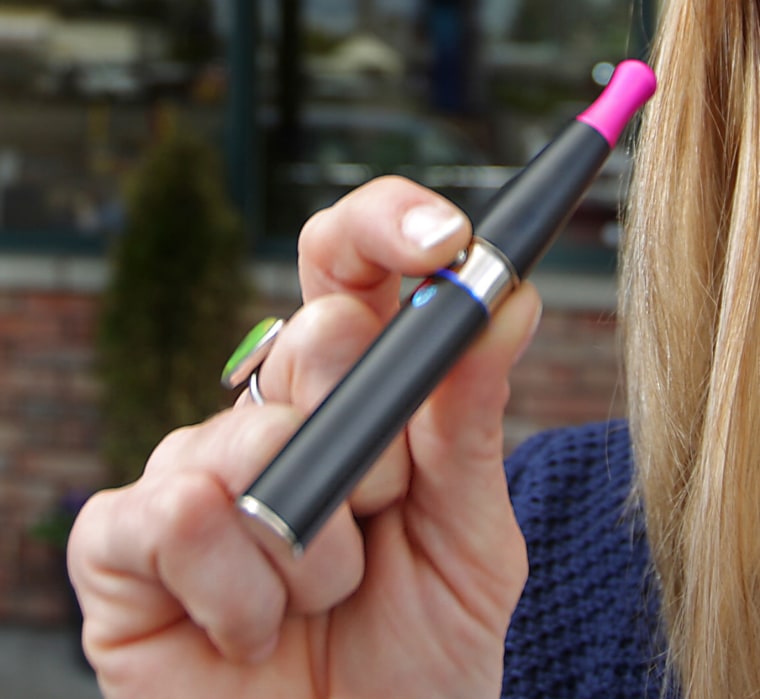The percentage of U.S. high school students who say they have tried e-cigarettes has doubled in the past year to 10 percent, government researchers reported Thursday.
They say it’s a troubling trend as no one knows yet how safe e-cigarettes are, although they are often marketed as a safer alternative to regular cigarettes.
“E-cigarette experimentation and recent use doubled among U.S. middle and high school students during 2011–2012, resulting in an estimated 1.78 million students having ever used e-cigarettes as of 2012,” researchers at the Centers for Disease Control and Prevention and the Food and Drug Administration wrote in a report.
“Moreover, in 2012, an estimated 160,000 students who reported ever using e-cigarettes had never used conventional cigarettes. This is a serious concern because the overall impact of e-cigarette use on public health remains uncertain.”
While the numbers of kids smoking e-cigarettes aren’t huge yet, the fact that they are doubling so quickly is a bad sign, said Dr. Tim McAfee, director of the CDC Office on Smoking and Health.
“I think the thing of most concern is the trend,” McAfee told NBC News. “There aren’t many things where we see a doubling in one year. We are not talking about adults here. The absolute numbers in middle school are small but they are doubling. We think it is something we need to get ahead of.”
And, health experts say, tobacco companies are obviously marketing e-cigarettes to young people. “With flavors like bubble gum and cotton candy, e-cigarettes are very clearly being made and marketed in ways that appeal to children,” said Paul Billings of the American Lung Association.
“These data show the urgent need for oversight of these products,” Billings added the FDA doesn’t regulate e-cigarettes but wants to.
Just 2.8 percent of high school students say they’ve used e-cigarettes in the past 30 days, which suggests many are experimenting but not smoking them steadily - yet. "Nicotine is a highly addictive drug,” says CDC director Dr. Tom Frieden.
E-cigarettes are pencil-shaped devices that use a cartridge to deliver an aerosol mist containing nicotine with flavorings. It’s propelled by propylene glycol or glycerol. “Potentially harmful constituents also have been documented in some e-cigarette cartridges, including irritants, genotoxins (which can damage DNA), and animal carcinogens,” FDA says in a statement on its website.

They are pricey - an e-cigarette product ranges from $10 to $120, depending on how many charges it provides. And there are dozens, if not hundreds, of brands.
CDC and FDA researchers looked at answers from the 2011 and 2012 National Youth Tobacco Survey, a pencil-and-paper questionnaire given to students in grades 6-12 at their schools.
The data show that 76.3 percent of middle and high school students who used e-cigarettes within the past 30 days also smoked conventional cigarettes in the same time. And about 20 percent of the middle school students who had tried e-cigarettes said they have never tried conventional cigarettes.
The researchers worry that e-cigarettes might act as a gateway to conventional tobacco products. “About 90 percent of all smokers begin smoking as teenagers,” said McAfee. “We now have young movie stars being paid to appear in ads on television for the first time in 40 years doing something that looks to all intents and purposes like smoking.”
McAfee fears the promotion may undo years of work marginalizing smoking, banning it from workplaces and restaurants and making it an unpopular habit.
Nicotine itself may also be harmful, McAfee added. “We are particularly concerned about adolescents being exposed to nicotine in any form because it has the potential to impact their brain development,” he said.
About 20 percent of Americans smoke, down from 40 percent in the 1960s. About 18 percent of high school students have smoked one or more cigarettes in the past month. Earlier this year the CDC reported the number of adults who have tried e-cigarettes has also doubled, to 21 percent, in the past year.
Members of Congress said they'd work to support tougher regulation of the electronic cigarettes.
“Electronic cigarettes as marketed today – with flavors like bubblegum and strawberry – are targeted at young people with the very clear intent of creating a new generation of smokers," Connecticut Democratic Senator Richard Blumenthal said in a statement.
"Without question, tobacco companies are using the same despicable tactics with e-cigarettes that they used in previous decades with traditional cigarettes to lure youth down a path of nicotine addiction and eventual death. Efforts to reduce tobacco use among youth must be redoubled, and include more aggressive action by the FDA. "
CDC says cigarette smoking is the leading preventable cause of disease, disability, and death in the United States, killing 443,000 people a year.